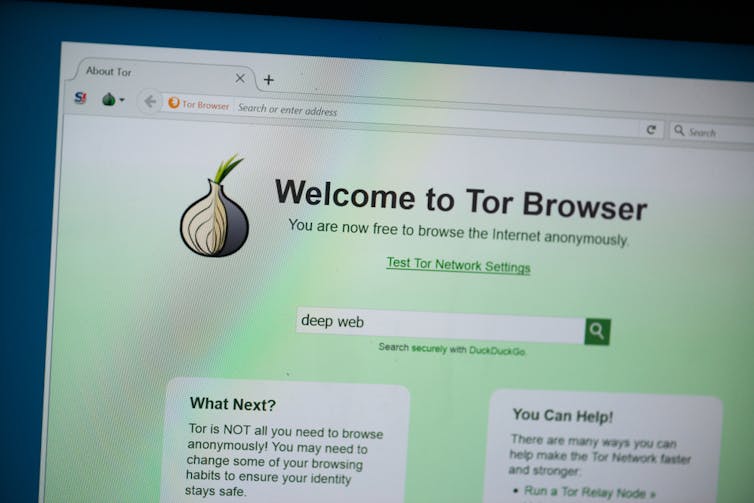How IT Works: The DarkNet
The internet is an expanse of websites, videos, images, and information so vast that no one could possibly view it in its entirety. Every hour of every day there are thousands upon thousands of webpages written, published, and indexed on search engines. All of this is ready and waiting to be read, watched, or consumed by millions of internet users.
Even still, the internet has layers. Beneath the surface level of searchable websites, there is a subterranean, anonymous level where anyone can post anything they want. It’s ominously called the DarkNet.
The DarkNet, Deep Web, And Tor Hidden Services Defined
One of the most common problems in understanding the DarkNet is that there are actually three distinct concepts at play. Each are used interchangeably to describe the DarkNet, but in reality they are different aspects of a larger idea.
The Deep Web
The deep web refers to any webpage or web content that is not indexed by Google or other search engines. Therefore, in order to find a page on the deep web, one must click on a direct link or already know the desired URL. This could include a wide range of websites. From a “thank you page” after filling out a web form to the black market itself, all of this content is considered part ofthe deep web.
The DarkNet
Within the deep web exists the DarkNet. These websites are not indexed by search engines and they are also only accessible by computers using special software to protect anonymity. The relation between the deep web and a DarkNet is much the same as that of a square and rectangle. All squares are rectangles, but not all rectangles are squares. In the same way, every webpage on the DarkNet is part of the deep web, but not every deep web page is on the DarkNet.
Tor Hidden Services
One of the most popular pieces of software available to access the DarkNet, Tor Hidden Services is an open source project to maintain the anonymity of users on the internet.
Security Disclaimer Regarding The DarkNet
Before we go any further, it is important to mention the security risks involved. The DarkNet is designed to protect the anonymity of the posters and users, however, that doesn’t mean it’s secure. All manner of hackers and viruses lurk on the cryptic and mysterious links of the DarkNet. Mindsight does not recommend anyone go there period. If set on exploring the DarkNet, conduct extensive research into security measures to protect yourself and your network. This is dangerous territory.
What’s On The DarkNet?
Consider the infamous comment boards on your favorite websites. Very quickly, conversations on those boards can devolve into nasty vitriol the likes of which you’d never utter in person. Now, those boards aren’t even anonymous. Imagine what type of content people might post with complete anonymity. The DarkNet is filled with the heroes and horrors of free and unregulated expression without the limitations or decency of the law.
It is worth noting that not everything is so sinister. There are anonymity advocates who simply enjoy that their identity is free from prying eyes, or citizens living in countries that restrict areas of their internet access. Content on the DarkNet is said to run the gambit between benign and depraved.
How Tor Hidden Services Protects The Anonymity Of DarkNet Visitors
Tor Hidden Services were originally designed to protect the anonymity of users as they visited normal websites, and it still can be used for that today. A DarkNet is just an alternate, though now primary, way to use Tor Hidden Services.
Tor fittingly adopted an onion as their symbol, because the layers of an onion are a perfect representation of their encryption process. Here’s how it works.
- In order to access the Mindsight website, a computer must send a data request to the server where our website is housed. Under normal circumstances, that server would be able to see the IP address of the initial computer. Tor puts a few measures in place to prevent this.
- The transmitted data is encrypted multiple times in nested layers and sent to multiple onion relays in the Tor network before finally shooting out of the network and to the desired website.
Onion Relays: These work just like proxy servers. They simply pass along the message to the next server in the route. However, what makes onion relays unique is that they only decrypt a small portion of the encrypted layers in the onion. No single onion relay every truly knows what it is passing along. It only decrypts the location of the previous server and the one that comes next.
- Upon receiving the request, the website cannot discern the original source. All it can see is the location of the last relay in the Tor network. The information is then sent back through the onion relay route and back to the original computer.
- As an added security measure, these routes through the onion relays are active for only about ten minutes. After that time, Tor will dissolve the route and automatically create a new one in the network for the user.
While there are other security concerns involved and ways around this process, Tor Hidden Services apply these encryption and relay principles to maintain the anonymity of their users regardless of what content they are trying to see.

No comments: